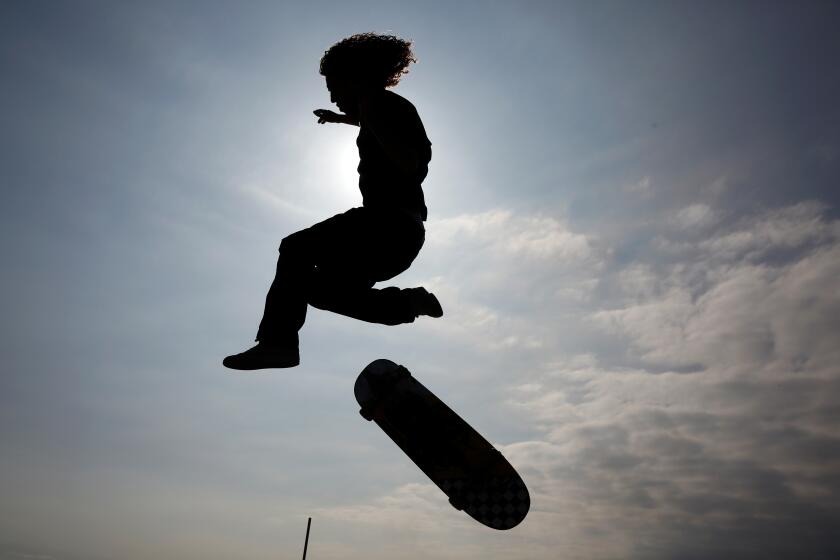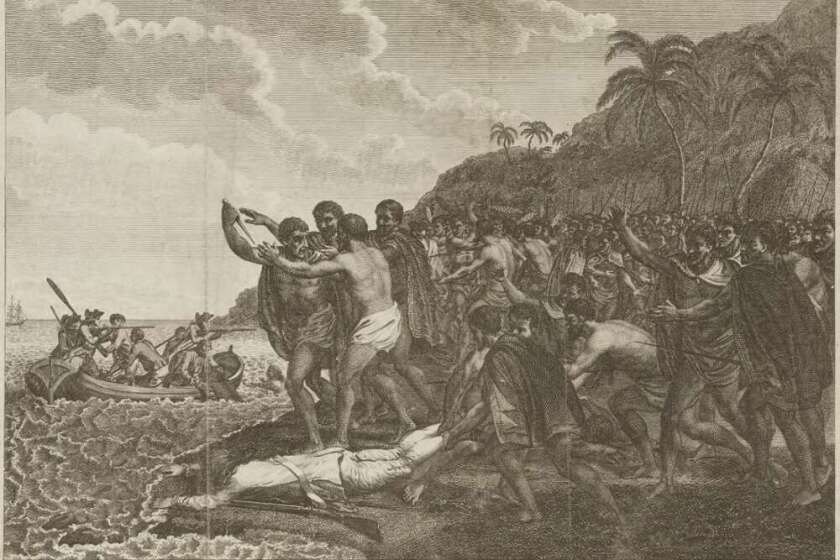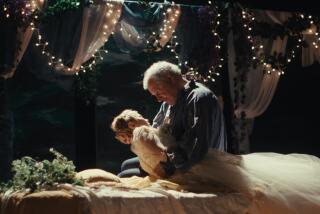A mysterious photographer of the Civil War, under a new microscope
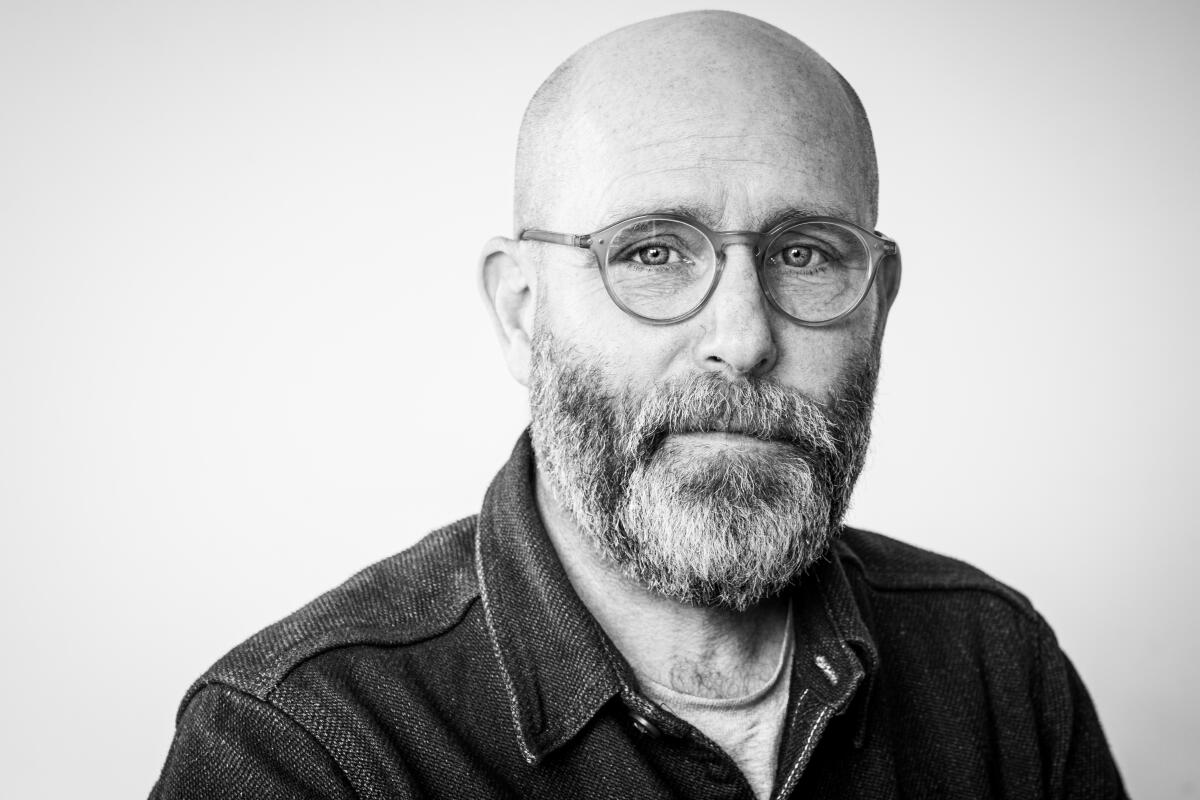
- Share via
Book Review
Double Exposure: Resurveying the West with Timothy O'Sullivan, America's Most Mysterious War Photographer
By Robert Sullivan
Farrar, Straus and Giroux: 448 pages, $32
If you buy books linked on our site, The Times may earn a commission from Bookshop.org, whose fees support independent bookstores.
There are a few verifiable truths about Civil War photographer Timothy O’Sullivan. He was born in 1840 in Ireland. He apprenticed in the studio of famed photographer Matthew Brady, and he took what he learned onto the field of battle, where he made some of the most haunting photographs of the war. After the war, he traveled with several government expeditions and photographed the American West on the eve of its appropriation, division and exploitation by government and business interests. Back east, he died of tuberculosis in 1882.
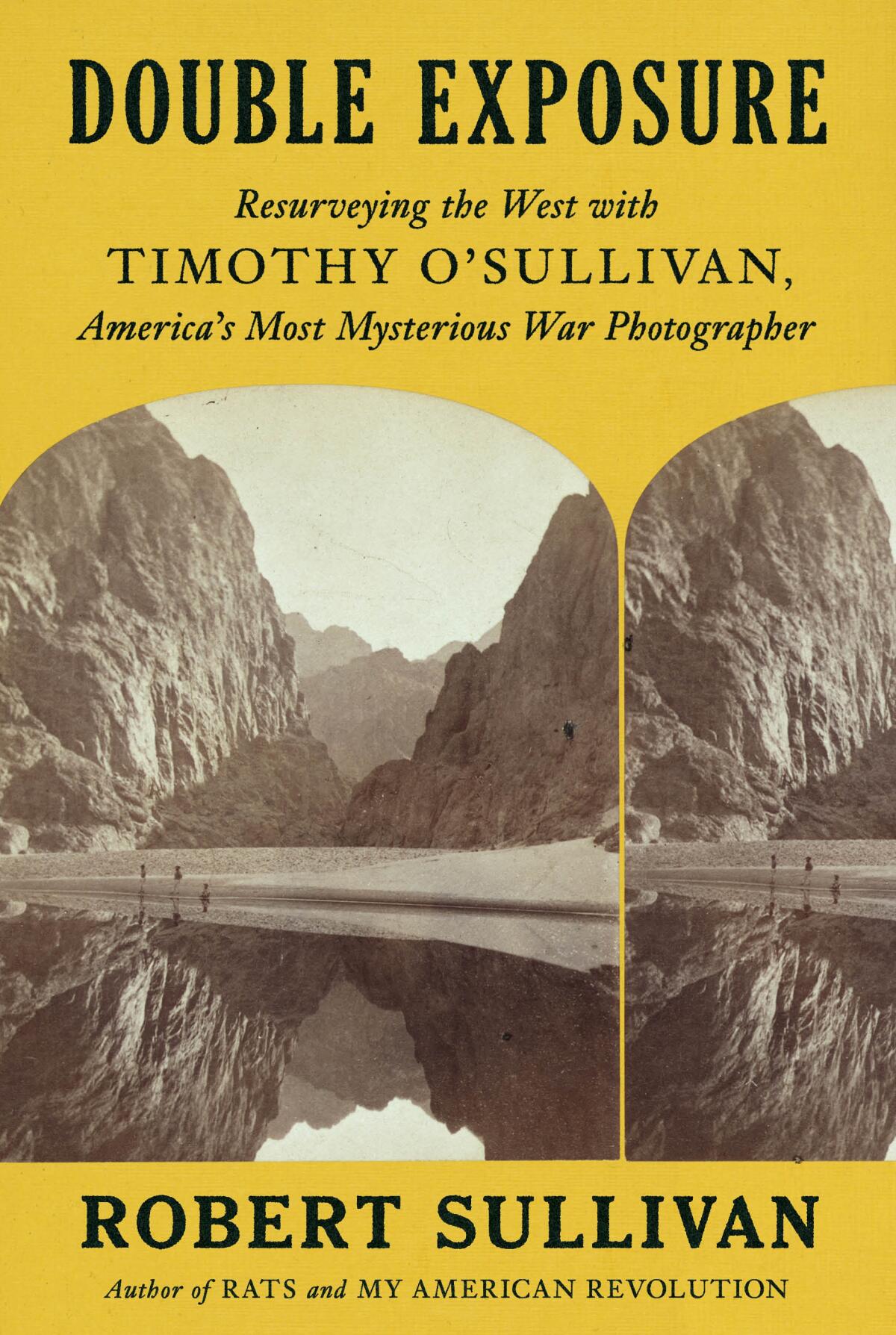
These are the bones of O’Sullivan’s story, but completing his portrait has frustrated historians, scholars and critics in awe of his photographic eye and astonished at his accomplishments. He left behind no personal accounts of his immersion in America’s bloodiest conflict. No diaries. Though he spent decades far from home, no letters. His photographs have been admired and collected by America’s institutions and museums, but O’Sullivan has remained a cipher. “The paucity of reliable information on O’Sullivan makes him a poor subject for biographical treatment, leaving writers to engage in speculation,” wrote one art historian.
Nonfiction writer Robert Sullivan (“Meadowlands,” “Rats”) evidently likes a challenge, because he spent a decade studying, researching and speculating on the life of O’Sullivan (the similarity of names is just one of several “double exposure” themes in this book).
The writer, famous for his digressive book-length explorations of topics as far-flung as whale hunting and the American Revolution, made a decision to use the slender frame of O’Sullivan’s life to support a series of linked essays on several subjects: O’Sullivan’s travels through western America; the outright giveaways of vast tracts of public land in the opening of the West; the U.S. military as an instrument of the savage destruction of Native Americans and their rights; and photography’s role in all this. It is a heavy load, and at times “Double Exposure” sags under the weight.
“Double Exposure” is at its best when it sticks closest to its primary subject — the chronology of O’Sullivan’s life and the grit, daring and genius his photographs required. On the bloody fields of the Civil War, he saw and recorded terrible things. His war photographs include “Harvest of Death,” perhaps the most famous photo of the war, in which he framed the bodies of soldiers fallen at the Battle of Gettysburg laid out in a kind of horrible purgatory, waiting for someone, anyone, to lay them to rest. After the war, he traversed some of the country’s most daunting landscapes, including a summertime crossing of Death Valley and an against-the-current exploration of the Colorado River (the leader had the nonsensical idea that it would be better to row up a river famed for its rapids).
José Vadi’s “Chipped: Writing From a Skateboarder’s Lens” is a granular but accessible look at the practice and subculture of the sport.
In the age of the iPhone, it’s hard to comprehend just how much trouble and struggle was required for O’Sullivan to capture his amazing images, wrestling with a large (almost two feet square), heavy box camera, handling delicate glass photographic plates in hostile conditions, traversing some of America’s harshest landscapes with supplies, a pack mule and a photography lab.
Author Sullivan, who attempted to retrace the photographer’s steps, evokes both these landscapes and the photographer’s approach in capturing their lonely essence. The author’s painstaking account of the warring personalities and insider baseball of the expeditions, rife with politics, occasional violence and outright corruption, shows what was at stake — control of a vast, rich and ripe-for-exploitation region. One expedition, ostensibly a government survey, was secretly funded and run by investors determined to stake and claim private lands and mineral rights before the rest of America showed up.
In Hampton Sides’ telling, this explorer’s final mission, ending with his death on the shores of Hawaii’s Big Island, has room for both condemnation and celebration.
But about Timothy O’Sullivan, the human being at the center of all this, there’s not much. The author fills the gaps in O’Sullivan’s life story with extended speculations and conjectures, and makes some decisions that leave the reader wondering what was left out. He acknowledges that O’Sullivan’s fellow explorers did write about him, but includes few of these personal observations (one observer did note that “O’Sullivan is in his element swearing at snow”). The book reproduces numerous O’Sullivan photographs, but not a portrait of the photographer.
More vagueness cloaks the other Sullivan, the author. He informs the reader early on that he had a debilitating illness that affected his work, and his struggles are a dark counterpoint to the main narrative, but the curious reader has to wait three-quarters of the way through the book’s 448 pages to learn what the illness actually was.
This reviewer’s bias up front is that of a journalist (verification, please), and despite an avid interest in photography and the history of the West, I struggled with Sullivan’s approach. A student of photography might relish the astonishing stories of photographing in the wilderness. A historian of the West might enjoy considering (and arguing back at) Sullivan’s assertions about the opening of the West (there’s a bibliography, but there are relatively few footnotes and no index). But for a general reader new to a story, history requires facts to be persuasive.
Sullivan says early on that he did not set out to write a biography, and maybe he completed the book he wanted to write — a blend of his own story and those of O’Sullivan and of the forcible opening of the West. This is an ambitious book, and perhaps the author achieved his own mission. But the man at the center of the story remains frustratingly out of reach.
Mary Ann Gwinn, a Pulitzer Prize-winning journalist who lives in Seattle, writes about books and authors.
More to Read
A cure for the common opinion
Get thought-provoking perspectives with our weekly newsletter.
You may occasionally receive promotional content from the Los Angeles Times.
